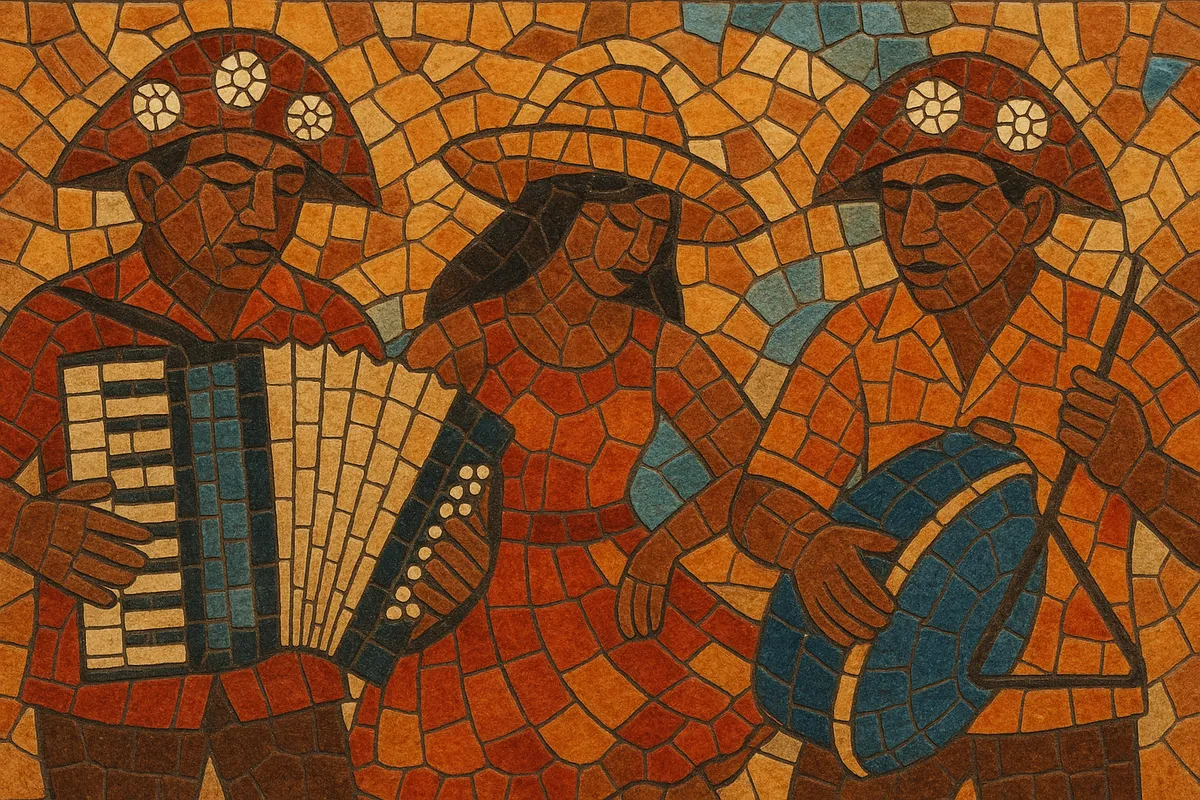Forró is a popular dance-music tradition from Brazil’s Northeast, centered on the trio of accordion (sanfona), zabumba (bass/tenor drum), and triangle. It encompasses a family of rhythms—most notably baião, xote, arrasta-pé, and xaxado—and is performed for partner dancing at parties and the June festivals (Festas Juninas).
The style balances infectious, syncopated grooves with singable melodies and simple, diatonic harmony. Lyrically, forró often celebrates rural life, love, longing (saudade), and the culture of the sertão. Over time, it has branched into substyles ranging from the acoustic, rootsy pé-de-serra to modern, amplified and electronic variants.
The term “forró” came to denote dance parties and the music played there, with roots in Northeastern Brazil’s folk dances and Afro-Indigenous-European exchanges. In the 1940s, accordionist-singer Luiz Gonzaga helped codify the modern format—sanfona, zabumba, and triangle—and popularized the baião rhythm nationwide through radio and records.
Gonzaga and songwriting partners such as Humberto Teixeira brought forró to urban audiences with hits like “Asa Branca.” Parallel traditions (xote, arrasta-pé, xaxado) coexisted within the forró umbrella. Artists like Jackson do Pandeiro, Marinês, and trios such as Trio Nordestino spread the sound through touring and broadcast, making it a symbol of Northeastern identity.
Dominguinhos advanced the idiom harmonically and instrumentally, blending forró with MPB, jazz, and bossa elements while preserving danceable grooves. The music thrived in regional circuits and São João festivals, even as other Brazilian styles dominated national charts. Roots-focused pé-de-serra remained vital in community dances and live venues.
In the 1990s, groups like Mastruz com Leite ushered in forró eletrônico, adding electric bass, keyboards, and drum machines. The 2000s saw the urban spread of forró universitário in southeastern college scenes, while traditionalists maintained pé-de-serra festivals and circuits. In the late 2010s and 2020s, piseiro (pisadinha) emerged—minimalist, keyboard-driven, and viral on digital platforms—renewing forró’s mass appeal and confirming its adaptability.
Program triangle ostinatos and zabumba patterns first, then add accordion vamps and melodic hooks.


